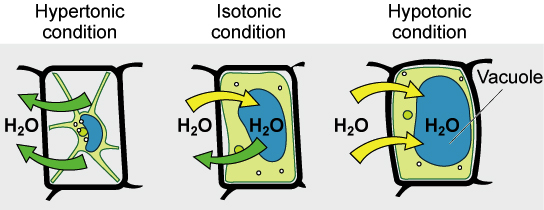Tag: conduction of water and minerals
Questions Related to conduction of water and minerals
Match List I with List II and select the correct answer using the codes given the lists.
| List-I(significance of the phenomenon in cell-water relations) | List-II(Quantity) |
|---|---|
| a. Degree of hydration of protoplasm | $1$. Wall pressure |
| b. Stretches cell walls and may lead to their enlargement if the walls are sufficiently plastic | $2$. Water potential |
| c. Increases the free energy of water molecule | $3$. Turgor pressure |
| d. Indicates the direction of diffusion of water | $4$. Osmotic potential |
Rate of water absorption can be increased through
Roots play insignificant role in absorption of water in
The transpiration-driven ascent of xylem sap depends mainly upon _______ property of water.
Which of the following statements is incorrect?
Which of the four most abundant elements in most plants (C, H, O and N), does a terrestrial green plant procure mainly through its roots from the soil?
Choose the correct answers from the alternatives given.
Pressure on a plant cell wall caused by the osmotic movement of water is called
Choose the correct answers from the alternatives given.
During the day most plants lose .......... and take up ..........
Choose the correct answers from the alternatives given.
Immerse a living cell in a hypotonic solution, and water will tend to
The most important factor for absorption of water in plants is?
